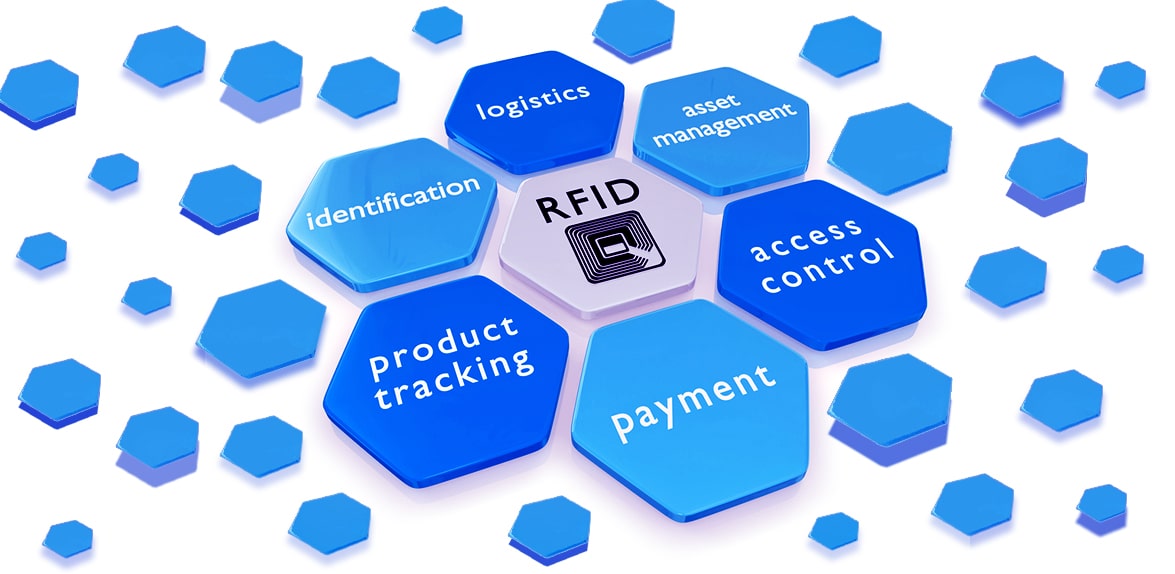RFID Labels and Tags
An RFID tag or label is a contactless chip sticker that incorporates an RFID antenna and memory chip to automatically identify objects in the distance using radio signals.
The antenna connects the tag and the reader, which initiates the reception and sending of the signal, but also helps to write information to the chip. The microchip is responsible for storing the data that is written to it. A response occurs when the reader has accumulated enough energy to act, i.e. sending the ID number and other recorded data. The allowable distance and speed of reading the signal depends on the specific chip type.
Hence another name for the tags – transponders. Using the electromagnetic waves of the chips, it is easy to exchange data via the transponder with other RFID-enabled devices such as RFID card readers or even a smartphone.
The tag memory, which stores the data, covers a case of various structures, usually in the form of a tag or a coating of special fabric. It protects the RFID tag from external influences (temperature, humidity, mechanical damage), so even a damaged tag can be read. The advantage of tags is that the data printed on the chip can be rewritten, but at the same time the tags can be protected from being overwritten and altered, which makes the tags a guarantor of the correctness of the information on the label.
The minimum memory capacity of the simplest RFID tag is 128 bits.
By their appearance, labels-stickers, key rings, cards, labels, as well as complex shapes (for example, figures in a plastic case) can be distinguished.
RFID tags are currently used in various areas in production and delivery:
- Control and management of raw materials, movement of vehicles, equipment and distribution of products at production facilities.
- During storage – they allow you to automate warehouse accounting, track balances and carry out an inventory, check the correct collection and timeliness of shipment of orders.
- When implemented, an RFID tag is easily attached to the packaging of any product for the purpose of marking and allows you to track the path of its distribution to the point of sale. Also, an RFID tag is a sensor that will work on the store’s anti-theft system if the product has not been prepaid at the checkout.
- In public places, for example, for contactless payment of public transport fares, registering in archives or for chipping animals.
- RFID tags are common in fur and alcohol accounting. They can be equipped with burglar protection, i.e. mechanism for self-destruction during manipulation.
The quality and correctness of the system as a whole depends on the correctly installed equipment and the choice of RFID-tags.
According to the principle of operation and type of power supply, the following types of RFID tags are distinguished:
- passive;
- semi-passive;
- active.
Passive tags do not have a power source, so they only work with very close contact with a reader that emits radio waves. Such marks are considered the simplest and are not capable of working at high speeds.
Semi-passive tags have their own power supply, which allows them to work at a greater distance from the reader. This type of tag breaks down after the battery power supply runs out.
Active tags also have their own power source, which is more powerful than that of semi-passive tags. Their radio signal has the highest power and read range. These tags are the most functional, as they allow you to record a large amount of data and use them in combination with other functions.
If we compare the technology with NFC, then RFID tags have an advantage, they catch the signal at an increased distance.
PLAST PRINT implements RFID offerings that are easily integrated into the enterprise accounting system. Our experts will help you choose the best RFID tags for your tasks.
